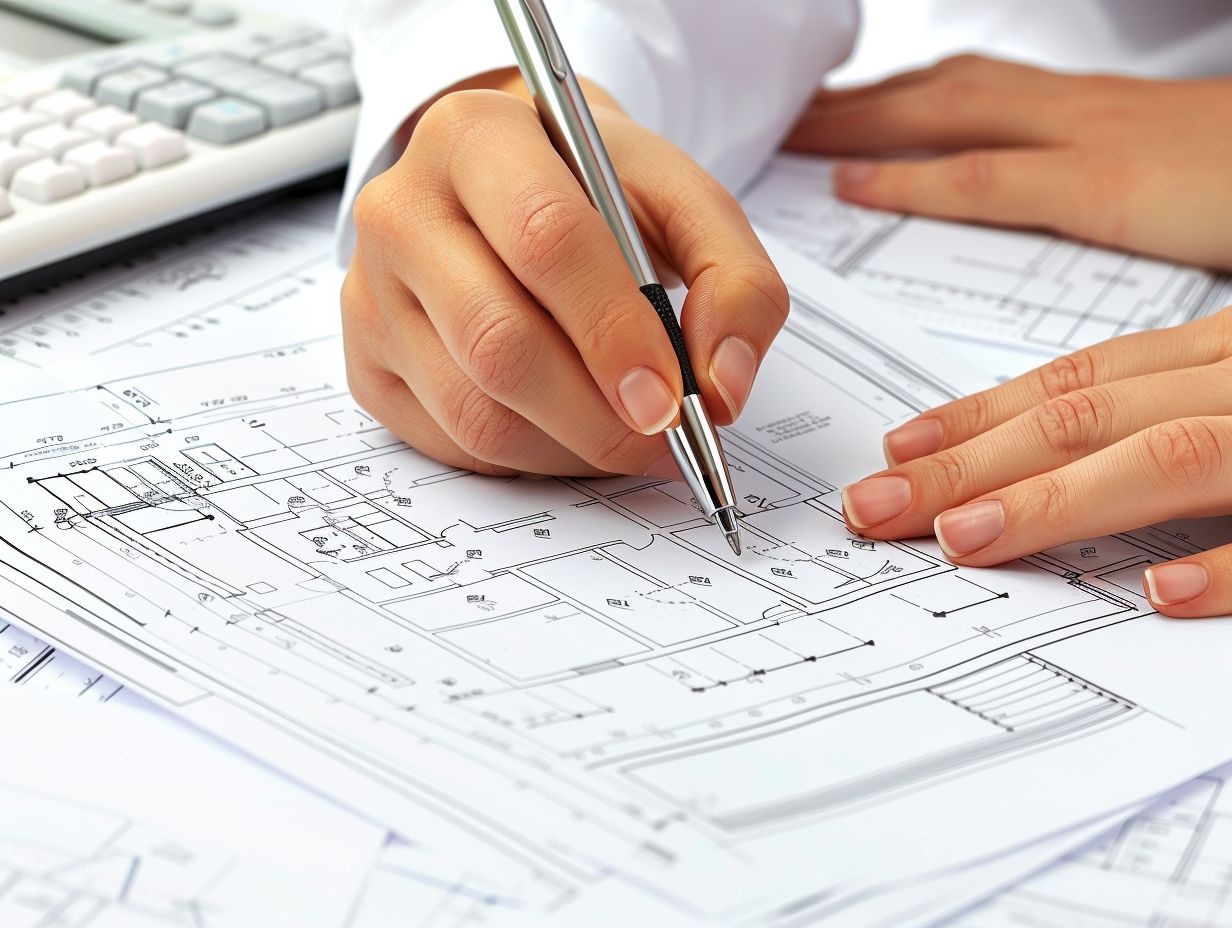
Step-by-Step Guide to Home Addition Engineering in San Francisco
Are you considering adding more space to your home in San Francisco? Home addition engineering is a crucial step in ensuring that your project is safe, compliant with local regulations, and structurally sound. From determining the scope of the project to navigating the permit approval process, there are several important considerations to keep in mind.
In this comprehensive guide, we will walk you through the step-by-step process of home addition engineering in San Francisco, highlighting the key factors to consider, the common challenges you may encounter, and how to find a reliable home addition engineer. Whether you are planning a room extension, a new story, or any other type of home addition, understanding the engineering aspects is essential for a successful and stress-free construction process. So, let’s dive into the essential steps and considerations for home addition engineering in San Francisco.
What is Home Addition Engineering?
Home Addition Engineering is the process of designing and implementing structural solutions for expanding residential properties in San Francisco. It plays a crucial role in overcoming the challenges of urban expansion and compliance with residential zoning regulations. The topography and limited space in San Francisco require innovative engineering approaches to optimize space while ensuring the safety and longevity of the structures. With careful planning and expertise, home addition engineering enables homeowners to maximize their living space and property value in a densely populated city like San Francisco, contributing to sustainable urban development and meeting the evolving needs of modern living.
Why is Home Addition Engineering Important in San Francisco?
Home Addition Engineering holds immense importance in San Francisco due to its strict urban planning regulations, zoning constraints, and the need to ensure structural integrity amidst the city’s unique architectural landscape.
Without proper engineering, homeowners may encounter numerous challenges when seeking to expand their homes in San Francisco. The city’s urban planning regulations and zoning constraints require careful consideration to ensure that any home additions fit seamlessly into the existing architectural fabric. Preserving the architectural integrity of residential properties is crucial, reflecting the city’s rich history and diversity of architectural styles. These factors highlight the necessity of professional home addition engineering to navigate the complexities of residential expansion projects in San Francisco.
How to Prepare for Home Addition Engineering in San Francisco?
Preparing for home addition engineering in San Francisco involves thorough surveying, consideration of seismic retrofit measures, adherence to zoning regulations, and comprehensive permitting procedures.
Surveying is the first crucial step, as it helps assess the land and existing structures. Seismic retrofit measures should be carefully evaluated to ensure the safety and stability of the home.
Zoning compliance requires understanding local regulations to design within permitted parameters. The permitting process entails submitting detailed plans, obtaining approvals, and adhering to building codes. It’s essential to work with experienced professionals who understand the specific requirements of San Francisco’s unique geography and building codes.
Determine the Scope of the Project
The first step in preparing for home addition engineering is to meticulously determine the scope of the project, encompassing aspects such as construction, building renovation, and room addition within the context of residential expansion in San Francisco.
This involves conducting a comprehensive evaluation of the existing structure, considering factors like architectural integrity, zoning regulations, and potential environmental impacts. Understanding the client’s specific needs and vision for the expanded space is crucial, as it guides the design and layout.
The feasibility of the proposed addition in terms of structural stability, utilities, and building codes must be carefully assessed to ensure the successful integration of the new elements with the existing home.
Set a Budget
Setting a realistic budget is essential for home addition engineering projects in San Francisco, involving meticulous consideration of construction costs and effective project management strategies.
Without a well-planned budget, home addition projects can encounter significant financial hurdles, leading to delays and compromises in quality. The allocation of resources also plays a crucial role, ensuring that the project stays within the set budget while meeting requirements for materials, labor, and other essential aspects.
By integrating cost-effective solutions and carefully monitoring expenses, homeowners can navigate the complexities of home addition engineering, ensuring a successful and financially sustainable outcome.
Research Local Building Codes and Permits
Thorough research of local building codes and permits is imperative for navigating the compliance requirements, zoning permits, and successful permit application processes in San Francisco’s home addition engineering endeavors.
Understanding the specific regulations and restrictions for construction projects in a particular area is essential for ensuring that the proposed addition complies with the local ordinances and standards. Thorough research allows homeowners and contractors to identify any variances or special permits that may be required for their project.
By gathering comprehensive information on the application procedures and necessary documentation, individuals can streamline the permit approval process and avoid potential delays or complications in their home addition ventures.
What Are the Steps Involved in Home Addition Engineering?
The steps in home addition engineering encompass:
- Site evaluation involves assessing the existing property and determining the feasibility of the addition. Thorough surveying helps in understanding the topography and existing structures.
- Detailed structural analysis ensures that the new addition integrates seamlessly with the existing home. Creation of construction drawings is crucial for visualizing the design and planning the construction.
- Navigating the permit approval process requires thorough documentation and compliance with local building codes.
- Comprehensive construction inspections are conducted at various stages to ensure quality and safety.
In the context of San Francisco’s unique requirements.
Site Evaluation and Surveying
The initial phase of home addition engineering involves comprehensive site evaluation, meticulous surveying, soil testing, and consideration of seismic retrofit measures in San Francisco’s unique environmental context.
This process is essential to ensure that the home addition is structurally sound and can withstand the specific geological and seismic conditions present in the San Francisco Bay Area. Soil testing helps determine the soil’s load-bearing capacity and potential for settlement, allowing engineers to design appropriate foundation systems.
Seismic retrofit measures must be integrated to fortify the structure against potential earthquake impacts, given the region’s high seismic activity. By factoring these elements into the engineering process, homeowners in San Francisco can enhance the safety and resilience of their home additions.
Design and Planning
The design and planning phase in home addition engineering involves meticulous architectural design considerations, floor plan development, adherence to residential zoning regulations, and compliance with building standards specific to San Francisco.
The architectural design in home addition engineering focuses on enhancing the existing structure’s aesthetic appeal while ensuring a seamless integration with the overall look and feel of the property. The floor plan development aims to maximize space utilization and cater to the specific needs and preferences of the homeowners.
Strict adherence to residential zoning regulations is crucial to ensure that the planned addition meets the requirements set forth by local authorities, thereby maintaining the integrity of the neighborhood. It is essential to comply with building standards specific to San Francisco to guarantee the safety and structural integrity of the addition.
Structural Analysis and Calculations
The phase of structural analysis and calculations in home addition engineering involves ensuring the structural integrity, calculating load-bearing capacities, and addressing seismic retrofit requirements in San Francisco’s dynamic architectural environment.
This crucial stage requires meticulous attention to detail, as the structural integrity of the existing and new components must harmonize to ensure a seamless and secure connection. Evaluating load-bearing capacities involves an in-depth understanding of the materials and forces at play, while factoring in seismic retrofit measures to fortify the structure against potential seismic events. Incorporating these considerations into the engineering process is imperative to guarantee the long-term stability and safety of the added structure within the architectural fabric of San Francisco.
Construction Drawings and Specifications
The creation of construction drawings and specifications involves meticulous documentation of building systems, adherence to construction regulations, and the incorporation of innovative design elements tailored to San Francisco’s architectural landscape.
This process begins with assessing the existing structure and determining how the addition will seamlessly integrate with the current building. Attention to building codes and regulations is paramount, ensuring that the design meets all safety and compliance standards. Sustainable and energy-efficient features are often integrated into the specifications to align with the city’s environmental goals.
Each detail, from material selection to structural elements, is carefully considered to ensure a cohesive and functional design that enhances the overall aesthetic and functionality of the home addition.
Permit Approval Process
Navigating the permit approval process involves meticulous attention to permitting requirements, submission of permit applications, and adherence to zoning permits specific to San Francisco’s residential permitting regulations.
Home addition engineering projects in San Francisco require thorough knowledge of the local building codes and zoning regulations. Potential complexities lie in the varying requirements for different types of home additions, such as a new room, garage, or deck. Applicants must address structural integrity, fire safety, and energy efficiency in their engineering plans to meet the stringent criteria set by the city. Thus, obtaining the necessary permits demands a comprehensive understanding of the specific regulations and a commitment to meticulous compliance.
Construction and Inspections
The construction and inspections phase involves effective construction management, collaboration with building contractors, comprehensive inspections, and the integration of renovation elements specific to San Francisco’s home addition engineering projects.
During this stage, the construction manager plays a pivotal role in coordinating the various aspects of the project, ensuring that the construction team adheres to established timelines and quality standards. Collaborating with experienced building contractors is essential to guarantee the seamless execution of the renovation plans, while also maintaining compliance with local building codes and regulations.
Rigorous inspections are conducted at key milestones to verify structural integrity, electrical and plumbing systems, and adherence to design specifications. The incorporation of renovation elements demands a meticulous approach to seamlessly blend the new construction with the existing structure, ensuring a cohesive and aesthetically pleasing outcome.
What Are the Common Challenges in Home Addition Engineering?
Home addition engineering often faces challenges such as limited space, structural concerns, zoning restrictions, and budget constraints, particularly in the context of San Francisco’s urban development landscape.
The limited space in urban areas like San Francisco can pose significant hurdles for home addition projects. Engineers must find innovative ways to maximize available space without compromising the structural integrity of the existing building. Zoning restrictions in densely populated areas can lead to complex permitting processes, requiring careful navigation to ensure compliance.
Alongside these challenges, managing budget constraints becomes imperative, with the need to balance cost-effective solutions while meeting design and safety standards.
Limited Space
The challenge of limited space in home addition engineering necessitates innovative building layouts, compliance with residential zoning, and adaptation to the dynamic landscape of urban development in San Francisco.
This delicate balance between maximizing usable space and adhering to zoning regulations requires careful planning and creative solutions. As urban areas continue to densify, homeowners and architects must find ways to optimize every inch of available space without compromising on safety and functionality.
Building layouts need to be strategic, considering factors such as natural light, privacy, and access to outdoor areas. Staying abreast of evolving urban development trends is critical to ensuring that new home additions harmonize with the surrounding environment and contribute positively to the overall cityscape.
Structural Concerns
Addressing structural concerns in home addition engineering involves prioritizing structural integrity, implementing seismic retrofit measures, and ensuring construction safety specific to San Francisco’s architectural landscape.
This approach is essential to uphold the safety and stability of the existing structure while accommodating additional loads from the home addition. Structural integrity is maintained through careful analysis of the building’s capacity and adherence to local building codes. Seismic retrofit measures, such as adding reinforcement elements and bracing, play a crucial role in safeguarding against potential earthquake hazards.
Ensuring construction safety involves meticulous planning, regular inspections, and adherence to safety protocols throughout the construction process, thereby minimizing the risk of structural failure.
Zoning Restrictions
Navigating zoning restrictions in home addition engineering involves strict compliance with zoning regulations and adherence to specific building standards prevalent in San Francisco’s residential expansion projects.
This process requires a thorough understanding of the local zoning laws and regulations to ensure that the proposed home addition aligns with the permitted land use and density requirements. Integrating relevant keywords such as setback, lot coverage, and height restrictions is crucial in the design phase to address zoning concerns effectively.
It is imperative to work closely with zoning officials and local authorities to obtain necessary permits and approvals, as non-compliance can lead to costly delays and potential legal ramifications.
Budget Constraints
Managing budget constraints in home addition engineering requires careful consideration of construction budgets, cost-effective material choices, and resource allocation specific to San Francisco’s construction projects.
This involves meticulous planning and tracking of expenses to ensure that the project stays within the set budget. When it comes to material selections, it’s essential to weigh the cost against the quality and durability, aiming to strike a balance between affordability and long-term value.
Efficient resource allocation involves optimizing labor and equipment usage, as well as scheduling tasks to minimize downtime and maximize productivity. By integrating these strategies, homeowners and engineers can navigate budget constraints while achieving a successful home addition project.
How to Find a Reliable Home Addition Engineer in San Francisco?
Finding a reliable home addition engineer in San Francisco involves thorough vetting of contractors, effective project planning, and consideration of inspection expertise tailored to the city’s unique construction requirements.
It’s essential to begin by researching potential engineers and checking their credentials, certifications, and previous project portfolios to ensure their expertise aligns with the specific requirements of your home addition. Engaging in detailed discussions about the scope of the project, timelines, and budget with the selected engineer is crucial for strategic project planning. Prioritizing engineers with in-depth knowledge of San Francisco’s building codes and inspection requirements will contribute to a smooth and successful home addition project.




No Comments